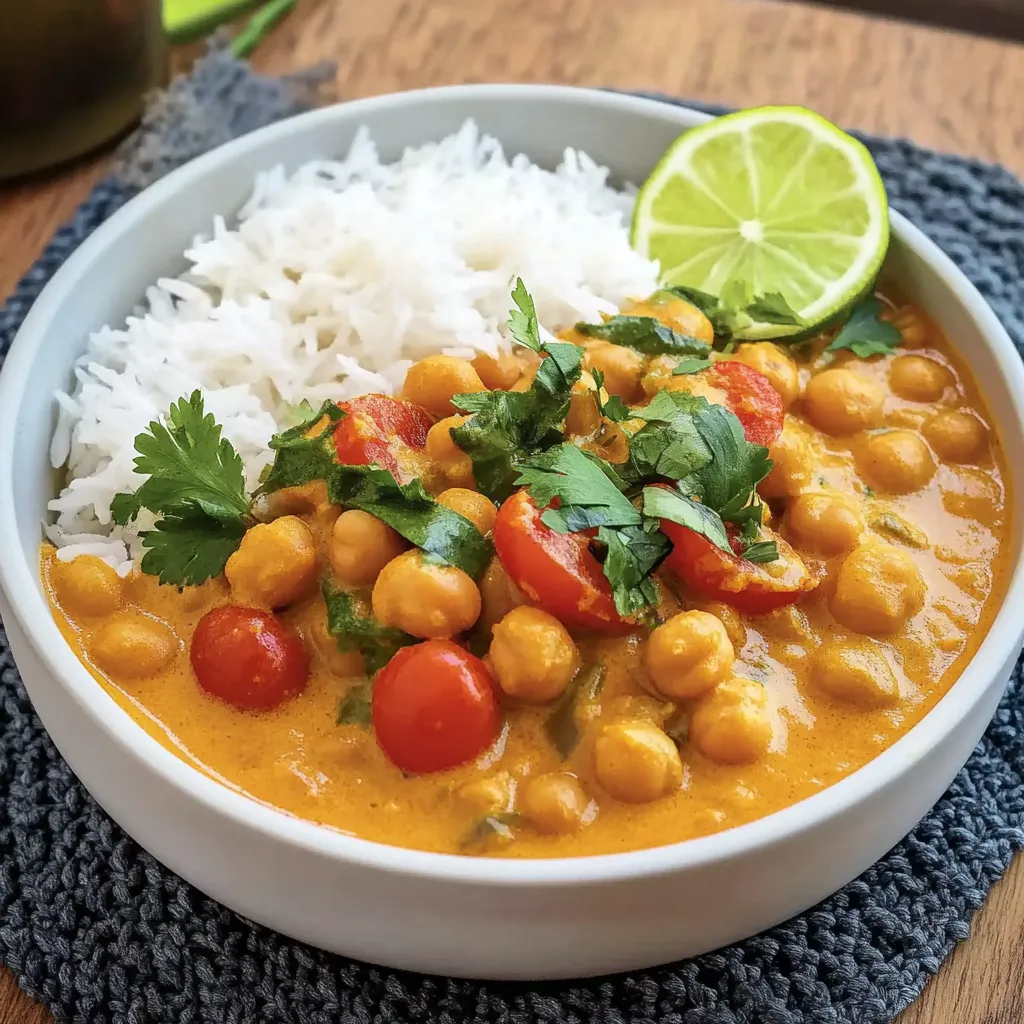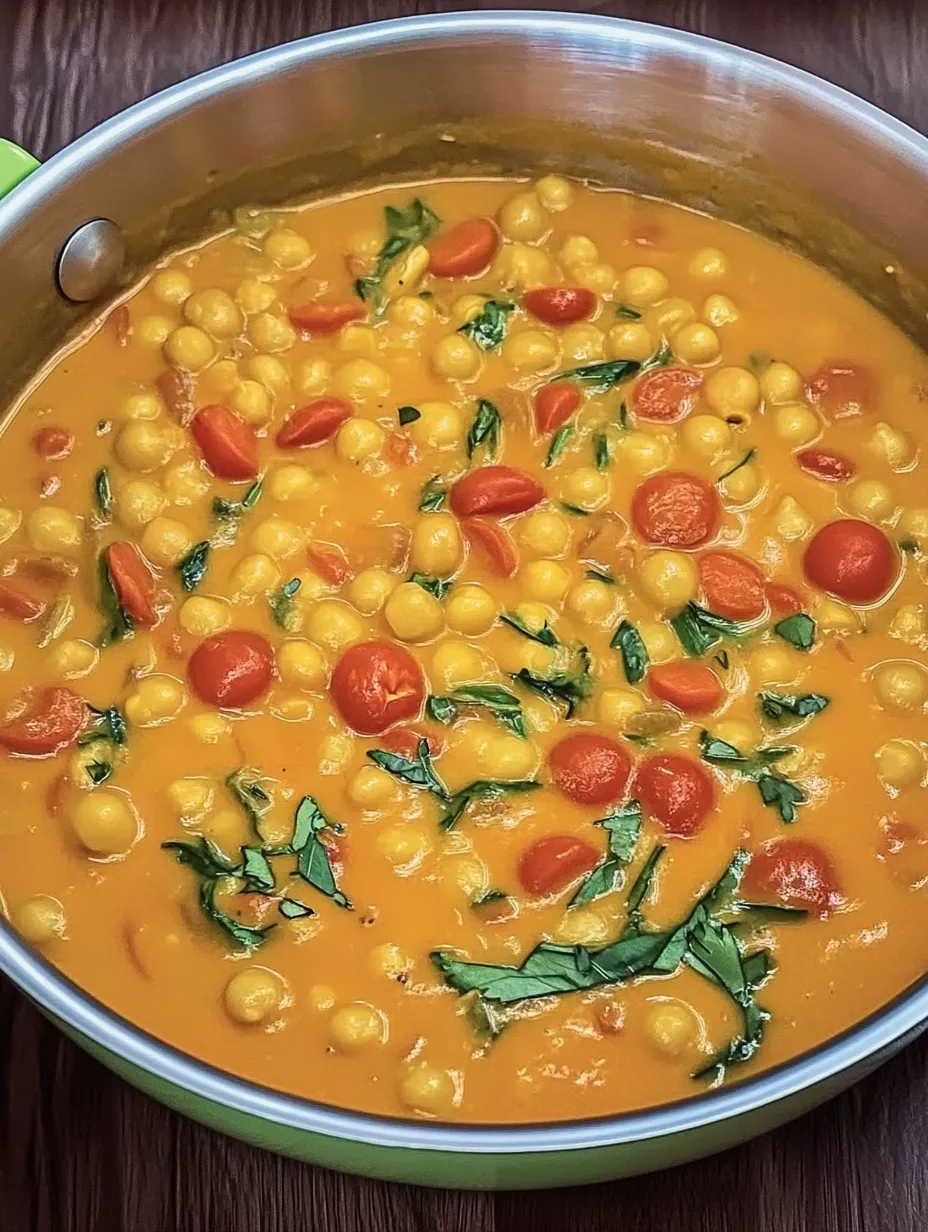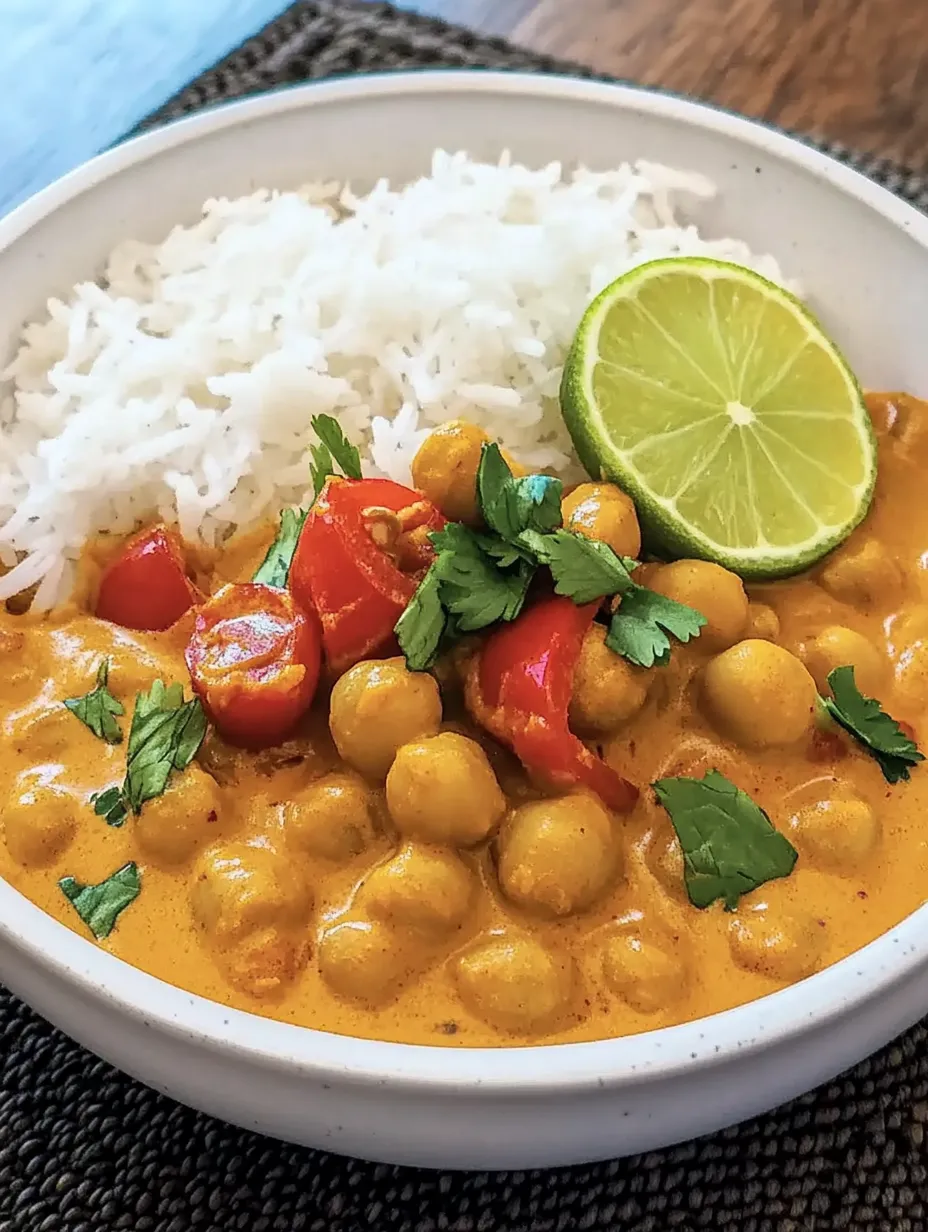 Pin it
Pin it
A creamy chickpea curry enchants the kitchen with exotic aromas and the seductive scent of oriental spices. The velvety coconut milk gently coats the chickpeas, while fresh cherry tomatoes and tender baby spinach give the dish a vibrant note. This hearty meal proves that plant-based cuisine can be both uncomplicated and exceptionally tasty.
In my family, this curry has convinced even the biggest skeptics of vegan cuisine. The combination of creamy sauce and hearty chickpeas makes it our favorite weeknight dish.
Our Flavor Treasures
- Chickpeas: Are the protein-rich star. When draining, be sure to save the liquid - it's excellent for thickening the sauce.
- Coconut milk: Gives the curry its characteristic creaminess. Choose coconut milk with a high fat content for a particularly rich taste experience.
- Curry paste: Is the heart of the spice blend. The red variant brings a balanced combination of heat and depth of flavor.
- Fresh ginger: Gives the dish its invigorating note. Choose firm, smooth roots for the most intense aroma.
- Lime juice: Adds the important acidic note at the end. Be sure to use freshly squeezed juice.
The Path to Perfect Curry
- Develop flavor base:
- Dice onions finely, removing the root ends. Finely chop garlic and ginger. Heat oil in a heavy pot and sauté the onions until translucent. Add garlic and ginger and gently awaken their essential oils.
- Spice development:
- Roast the curry paste with the dry spices in the hot oil. This important step develops the full flavors. Add tomato paste and briefly roast until the color darkens slightly.
 Pin it
Pin it
Creamy Completion
Add the chickpeas and let them roast briefly. Deglaze with coconut milk and stir everything gently. Stir in the halved cherry tomatoes and let the curry simmer over medium heat. Finally, fold in the baby spinach until it wilts.
I find the transformation of the curry paste particularly fascinating when roasting. The intense aroma that unfolds reminds me of my travels through Southeast Asia and the vibrant spice markets there.
Harmonious Side Dishes
The curry harmonizes wonderfully with fragrant basmati rice, whose long grains perfectly absorb the aromatic sauce. Quinoa or buckwheat also offer nutritious alternatives. A freshly baked naan bread is excellent for soaking up the creamy sauce.
Curry Reinterpreted
Experiment with different vegetables such as sweet potatoes, cauliflower, or eggplant. For a more protein-rich variant, roasted cashews or tofu can be added. In summer, the curry also tastes good lukewarm with fresh herbs.
 Pin it
Pin it
Optimize Shelf Life
In an airtight container, the curry keeps up to three days in the refrigerator. When reheating, add some coconut milk or water if necessary. Frozen in portions, it keeps up to three months. Thaw gently and heat before serving.
After years of experimenting with different curry recipes, this version has emerged as an absolute favorite. The balance between creaminess, spice, and fresh elements makes it a reliable dish that delights both in everyday life and with guests. The simplicity of preparation stands in perfect contrast to the complexity of the flavors.
Frequently Asked Questions
- → Can I use dried instead of canned chickpeas?
- Yes, but the chickpeas need to be soaked and cooked beforehand. Plan for about 8 hours of soaking time and 45 minutes of cooking time.
- → How spicy is the curry?
- With the quantities indicated, it is mild to medium spicy. You can adjust the heat by varying the amount of red curry paste.
- → Can I prepare the curry ahead of time?
- Yes, it actually tastes even better the next day. It keeps in the refrigerator for up to 3 days.
- → What substitutes for coconut milk are possible?
- You can use oat cream or soy cream. The taste will be slightly less creamy and less exotic.
- → Can I use frozen instead of fresh spinach?
- Yes, use the same amount of frozen leaf spinach. Simply thaw at the end and stir in.
